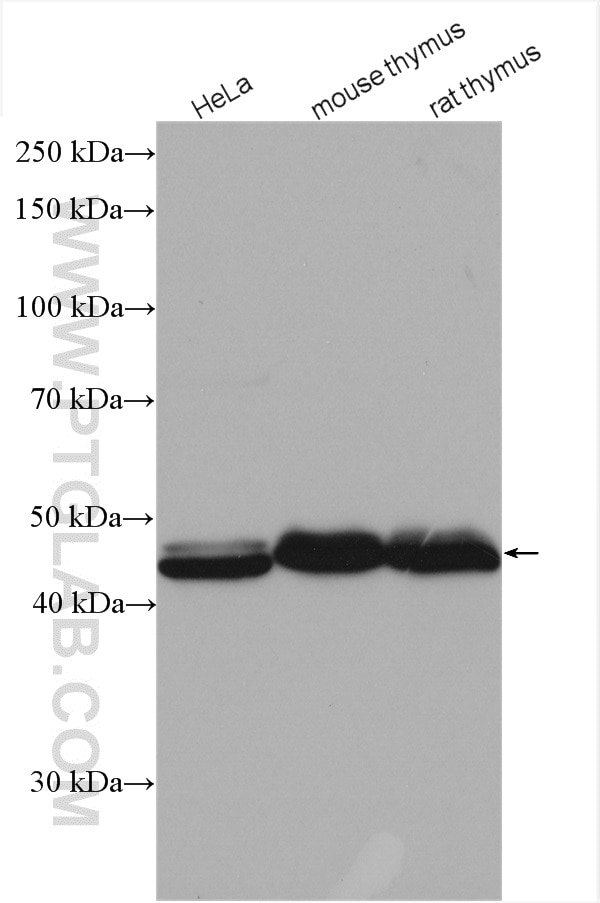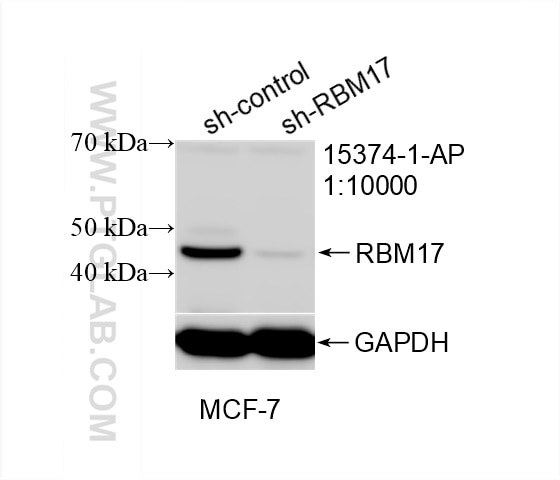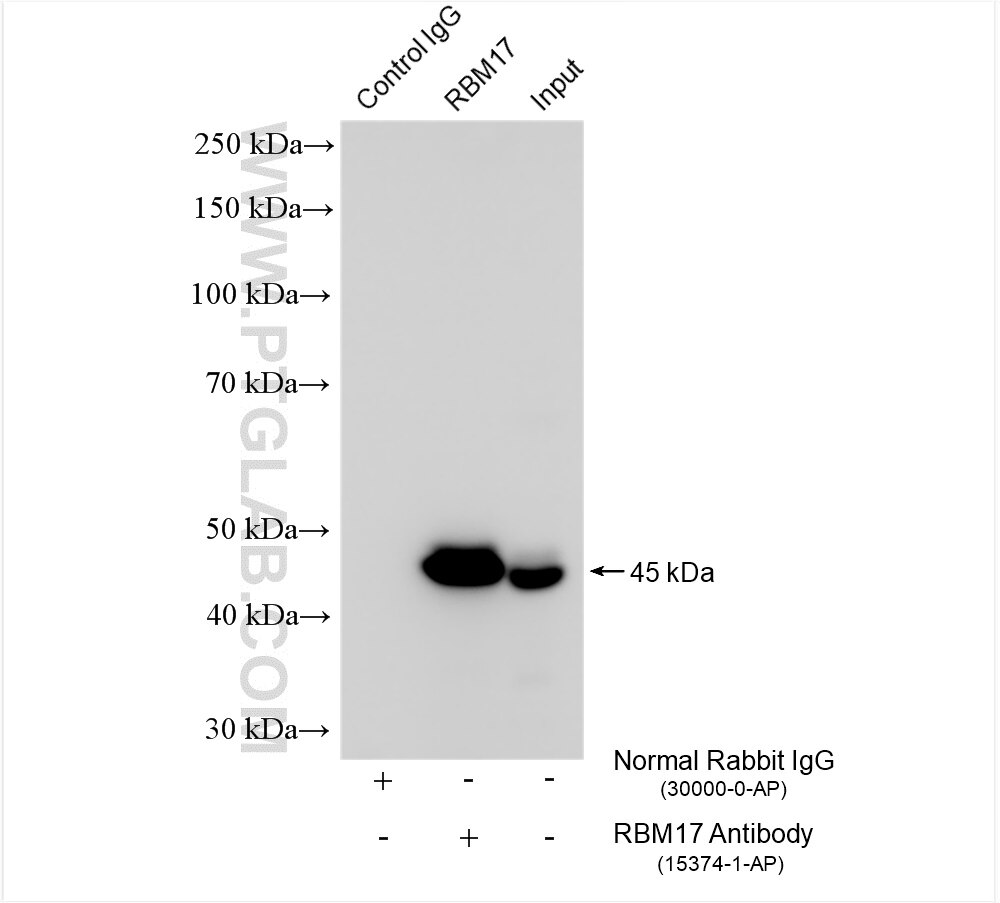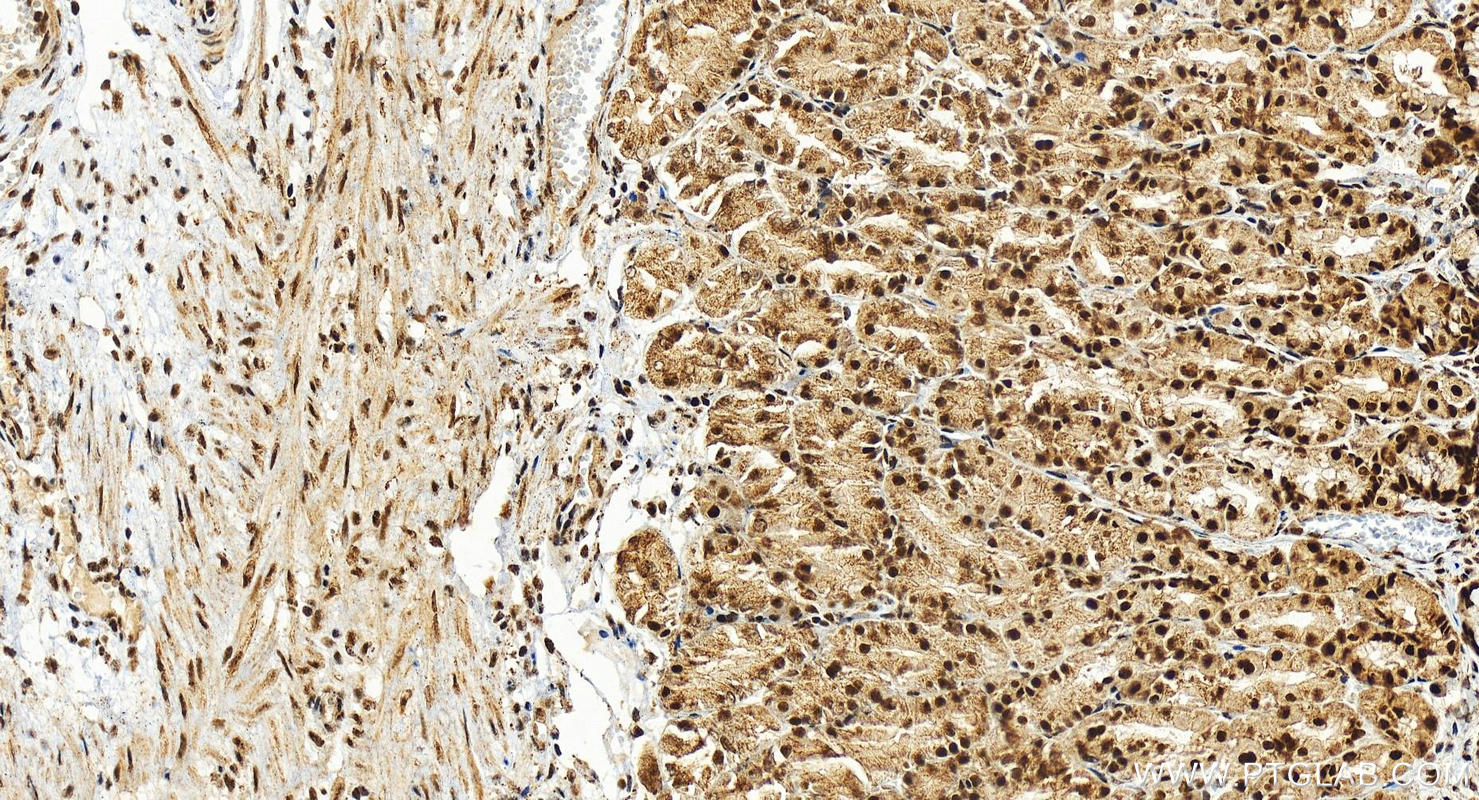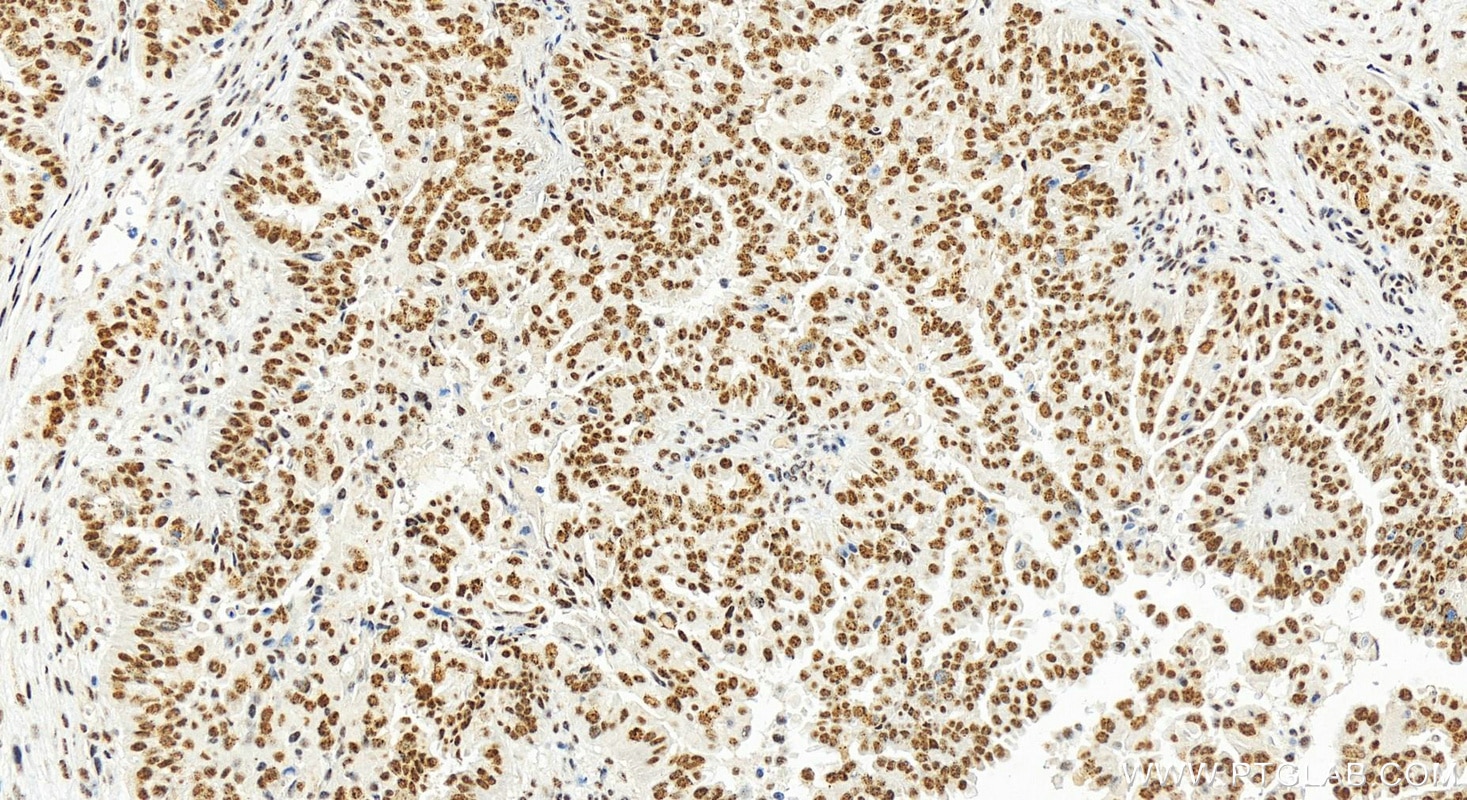- Phare
- Validé par KD/KO
Anticorps Polyclonal de lapin anti-RBM17
RBM17 Polyclonal Antibody for WB, IHC, IP, ELISA
Hôte / Isotype
Lapin / IgG
Réactivité testée
Humain, rat, souris
Applications
WB, IHC, IP, ELISA
Conjugaison
Non conjugué
N° de cat : 15374-1-AP
Synonymes
Galerie de données de validation
Applications testées
| Résultats positifs en WB | cellules HeLa, cellules MCF-7, tissu de thymus de rat, tissu de thymus de souris |
| Résultats positifs en IP | cellules MCF-7, |
| Résultats positifs en IHC | human ovary cancer tissue, tissu d'estomac humain il est suggéré de démasquer l'antigène avec un tampon de TE buffer pH 9.0; (*) À défaut, 'le démasquage de l'antigène peut être 'effectué avec un tampon citrate pH 6,0. |
Dilution recommandée
| Application | Dilution |
|---|---|
| Western Blot (WB) | WB : 1:1000-1:8000 |
| Immunoprécipitation (IP) | IP : 0.5-4.0 ug for 1.0-3.0 mg of total protein lysate |
| Immunohistochimie (IHC) | IHC : 1:1000-1:4000 |
| It is recommended that this reagent should be titrated in each testing system to obtain optimal results. | |
| Sample-dependent, check data in validation data gallery | |
Applications publiées
| WB | See 1 publications below |
Informations sur le produit
15374-1-AP cible RBM17 dans les applications de WB, IHC, IP, ELISA et montre une réactivité avec des échantillons Humain, rat, souris
| Réactivité | Humain, rat, souris |
| Réactivité citée | souris |
| Hôte / Isotype | Lapin / IgG |
| Clonalité | Polyclonal |
| Type | Anticorps |
| Immunogène | RBM17 Protéine recombinante Ag0985 |
| Nom complet | RNA binding motif protein 17 |
| Masse moléculaire calculée | 45 kDa |
| Poids moléculaire observé | 45 kDa |
| Numéro d’acquisition GenBank | BC007871 |
| Symbole du gène | RBM17 |
| Identification du gène (NCBI) | 84991 |
| Conjugaison | Non conjugué |
| Forme | Liquide |
| Méthode de purification | Purification par affinité contre l'antigène |
| Tampon de stockage | PBS with 0.02% sodium azide and 50% glycerol |
| Conditions de stockage | Stocker à -20°C. Stable pendant un an après l'expédition. L'aliquotage n'est pas nécessaire pour le stockage à -20oC Les 20ul contiennent 0,1% de BSA. |
Informations générales
RNA-binding motif protein 17 (RBM17), also named splicing factor 45, was first identified as a member of the spliceosome. RBM17 expression is low in normal tissues but is overexpressed in several forms of cancer, including breast, ovarian and prostate.
Protocole
| Product Specific Protocols | |
|---|---|
| WB protocol for RBM17 antibody 15374-1-AP | Download protocol |
| IHC protocol for RBM17 antibody 15374-1-AP | Download protocol |
| IP protocol for RBM17 antibody 15374-1-AP | Download protocol |
| Standard Protocols | |
|---|---|
| Click here to view our Standard Protocols |
